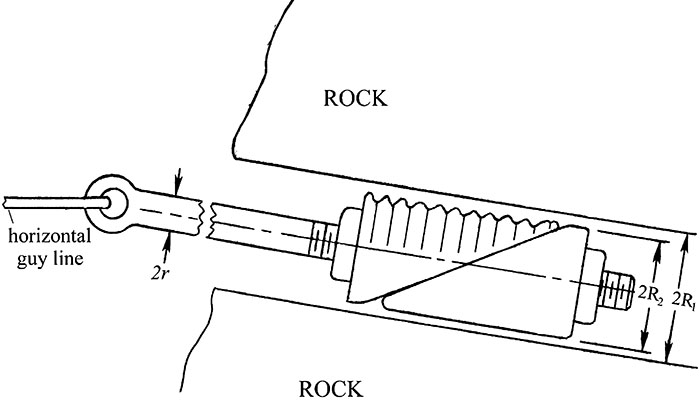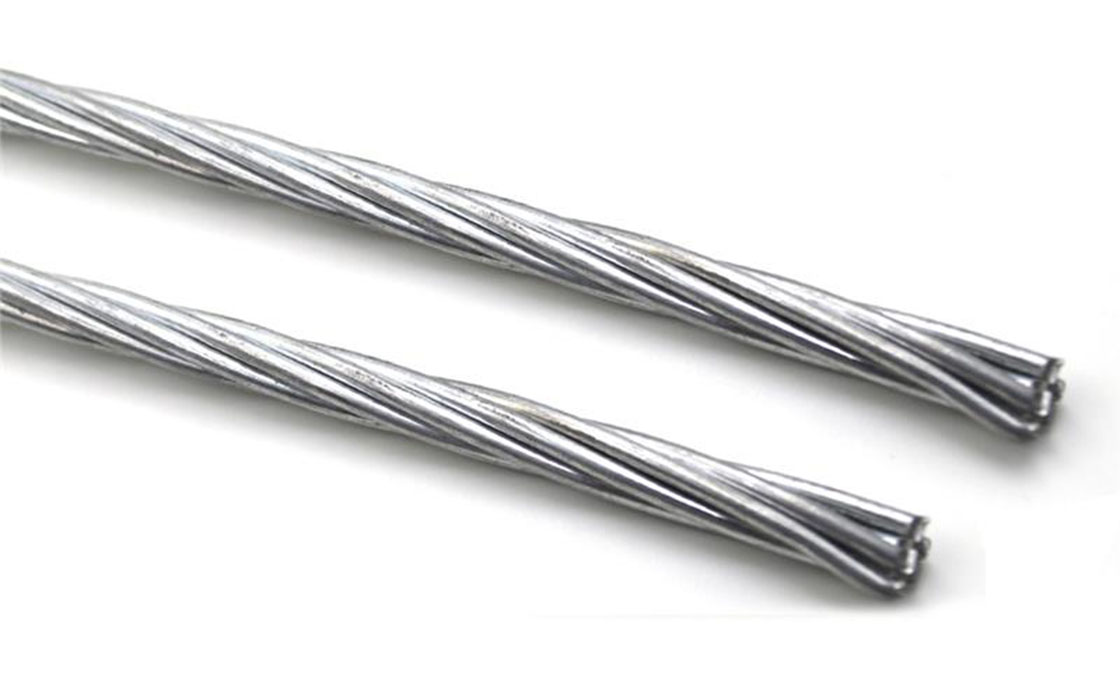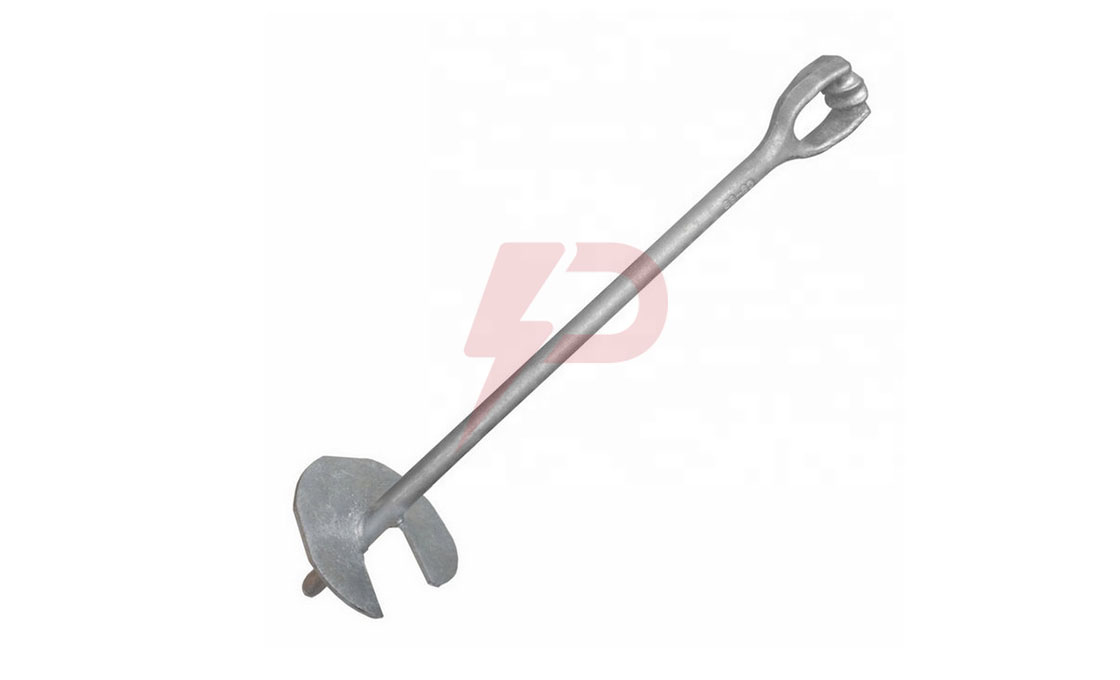Rock Anchor
An expanding rock anchor is a type of ground anchor for rocky soil, it provides strength and stability to rock and concrete structures, protecting them against problematic movement and collapse. Inserted directly into the solid mass and expanded once inside, it transfers tension from the exterior to the interior of the structure, providing sturdy reinforcement at its core.
This strong and durable expanding rock anchor is crafted from treated steel and iron, which meets the necessary testing specifications. It boasts a triple guy eye, making it suitable for up to 3 guy strands. Its eye grooves are also contoured to minimise wear and tear to slack.
The rock anchor offers long-lasting and reliable stabilisation against the onslaughts of both nature and man-made machinery. Suitable for use in a range of infrastructure, construction, and telecommunications projects.
Product Features:
- Galvanised steel anchor shaft
- Drop-forged triple guy eye
- Rust-resistant iron wedges
- Meets spec ASTM A15-C
- Contoured eye grooves
- Anti-corrosive materials
- Easy grip, solid handle
- Minimal maintenance

| Model | Rod Diameter Inches (cm) | Rod Length Inches (cm) | Anchor Size Closed Inches (cm) | Anchor Size Exposed Inches (cm) | Hole Size Inches (cm) | Weight Lbs (kg) |
| R3415 | 3/4 (1.9) | 15 (38) | 1-3/4 (4.5) | 2-3/8 (6) | 1-7/8 (4.8) | 5 (2.3) |
| R3430 | 3/4 (1.9) | 30 (76) | 1-3/4 (4.5) | 2-3/8 (6) | 1-7/8 (4.8) | 7 (3.2) |
| R3453 | 3/4 (1.9) | 53 (135) | 1-3/4 (4.5) | 2-3/8 (6) | 1-7/8 (4.8) | 10 (4.5) |
| R1030 | 1 (2.5) | 30 (76) | 2-1/4 (5.7) | 3-1/8 (7.9) | 2-3/8 (6) | 14 (6.4) |
| R1053 | 1 (2.5) | 53 (135) | 2-1/4 (5.7) | 3-1/8 (7.9) | 2-3/8 (6) | 18 (8.2) |
| R1072 | 1 (2.5) | 72 (183) | 2-1/4 (5.7) | 3-1/8 (7.9) | 2-3/8 (6) | 24 (10.9) |
| R1096 | 1 (2.5) | 96 (244) | 2-1/4 (5.7) | 3-1/8 (7.9) | 2-3/8 (6) | 29 (13.2) |
| R3460 | 3/4 (1.9) | 60 (152) | 1-3/4 (4.5) | 2-3/8 (6) | 1-7/8 (4.8) | 11 (5) |
| R3472 | 3/4 (1.9) | 72 (183) | 1-3/4 (4.5) | 2-3/8 (6) | 1-7/8 (4.8) | 12 (5.4) |
| R3484 | 3/4 (1.9) | 84 (213) | 1-3/4 (4.5) | 2-3/8 (6) | 1-7/8 (4.8) | 13 (5.9) |
| R3496 | 3/4 (1.9) | 96 (244) | 1-3/4 (4.5) | 2-3/8 (6) | 1-7/8 (4.8) | 15 (6.8) |
Expanding Rock Anchor – The Complete Guide
Used to reinforce and stabilise outdoor structures, expanding rock anchors are frequently used by telecommunications and construction companies.
What is an expanding rock anchor?

An expanding rock anchor is an elongated engineering tool, usually made of a sturdy metal such as steel. They are used to transfer tension from the outside to the inside of a solid material such as rock or concrete. The purpose of this is to maximise the stability or the safety of the structure (or both).
Its design is a cross between a bolt and a screw. At the top end, it has a handle and an ‘eye’ to operate the anchor. At the lower end, it has two wedges, designed to expand outwards and pressurise inside the mass.
expanding rock anchors are utilised in a wide variety of industries that work with materials such as rock and concrete. These include infrastructure (e.g. the construction of bridges, tunnels, and highways), telecommunications (e.g. to support or protect cable suspension), and mining and refinery.
How do expanding rock anchors work?

As their main purpose is to reinforce and stabilise solid mass structures, expanding rock anchors are large pieces of equipment. They measure between 3 and 6 meters in length and possess a tensile strength of around 36,000 lb.
Once a hole is drilled into the mass, grouting takes place (if required), and the expanding rock anchor is directly inserted. Operated from the outside, the expanding rock anchor is then ‘tensioned’. This is done by turning the eye of the anchor clockwise, which expands the wedges at the lower end into the interior rock surface until an appropriate level of tension is achieved.
Once an expanding rock anchor is successfully in place, it provides support and reinforcement to the structure – and also anything built upon it. This makes it possible to make use of the mass for heavy-duty commercial purposes (e.g. construction projects).
expanding rock anchor Features
expanding rock anchors are perfectly designed for their purpose, and they possess several key features that facilitate this.
At the higher operative end, the expanding rock anchor features a drop-forged handle and an eye to manually operate the anchor. This model of expanding rock anchor features a triple guy eye to enable the threading of multiple guy strands through the anchor simultaneously.
Its shaft – the anchor bar – is made of hot-dipped galvanized steel for maximised strength and resilience. The steel has to meet certain specifications before it can be used in the manufacture of expanding rock anchors (ASTM A123 Class C). This ensures the desired level of quality and effectiveness.
The lower end (or tip) of the expanding rock anchor consists of two interlocking wedges, which are made of iron and coated in a rust inhibitor. The wedges are optimally designed to dilate outwards and force into the solid walls when operated from the upper end.
As they are usually made from hard-wearing, pre-treated metal, expanding rock anchors are a cost-effective and long-lasting solution that requires minimal maintenance once installed correctly.
Installation of expanding rock anchors

The successful installation of an expanding rock anchor is dependent upon a number of factors. To ensure safety and maximum effectiveness, the installation process requires the involvement of specialised professionals.
A variety of crucial testing needs to be done beforehand to ensure that the installation can be done safely. It is also important to be equipped with relevant key information, such as the type, density, and permeability of the mass being anchored.
Once this has been completed, the basic steps of expanding rock anchoring are:
- Drilling the hole: Using specialist operators and equipment, a suitably sized hole is drilled into the structure;
- Grouting: This is a form of cementing that increases the anchor holding strength (if a certain free tensioning length is desired, expanding rock anchors can be grouted in two stages);
- Inserting the anchor: The anchor shaft is then eased through the hole. The expanding rock anchor must be installed at an angle of 45° (towards the structure) and within 5° of alignment with the guy load;
- Tensing the anchor: The expanding rock anchor is then tensioned to the appropriate level from the exposed end.
The shaft of the anchor is designed to transfer tension load from one end of the anchor to the other, easing the pressure on the outside of the structure and strengthening its core.
Extendable expanding rock anchors possess a high load capacity, as the shaft can simply be lengthened as per load requirements.
Summary
Fuelled by industry and commerce, the last two centuries have witnessed an explosive expansion in infrastructure- launching us into a vibrant, urbanised world.
Engineering – the indispensable science underpinning this progress – has evolved at a timely pace to adapt to our new civilised culture with a host of cutting-edge tools and techniques. In the process, unchartered territory and raw materials have been explored and utilised on a scale never previously envisaged.
Accompanied by tried and tested methods, expanding rock anchors is one of the tools which have helped to make all of this possible. By reinforcing our rugged resources, tools such as these enable us to continue our advancement towards an increasingly modernised world – and to do so hand-in-hand with our natural landscape.
Frequently asked questions (FAQ)
What is an expanding rock anchor?
An expanding rock anchor is an elongated engineering tool, usually made of a sturdy metal such as steel. They are used to transfer tension from the outside to the inside of a solid material such as rock or concrete. The purpose of this is to maximise the stability or the safety of the structure (or both).
How do expanding rock anchors work?
The main purpose of the expanding rock anchor is to reinforce and stabilise solid mass structures.
Once a hole is drilled into the mass, grouting takes place, and the expanding rock anchor is directly inserted. Operated from the outside, the expanding rock anchor is then ‘tensioned’.
Once a expanding rock anchor is successfully in place, it provides support and reinforcement to the structure.
How to install a expanding rock anchor step by step?
The basic steps of expanding rock anchoring are:
- Drilling the hole
- Grouting:
- Inserting the anchor
- Tensing the anchor
Note: A variety of crucial testing needs to be done beforehand to ensure that the installation can be done safely.
What are the features of the expanding rock anchor?
- Galvanised steel anchor shaft
- Drop-forged triple guy eye
- Rust-resistant iron wedges
- Meets spec ASTM A15-C
- Contoured eye grooves
- Anti corrosive materials
- Easy grip, solid handle
- Minimal maintenance





